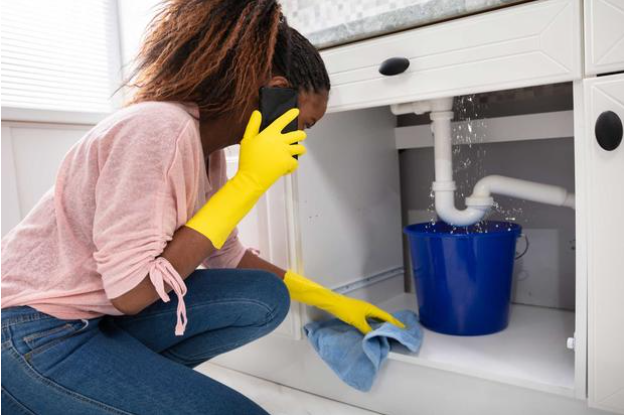Who has to pay for repairs? The landlord or the tenant?
Rental properties are the backbone of housing in Victoria, offering a place to call home for a over 30% of the Victorian population.
Repairs and maintenance responsibilities in a rental property are typically shared between the landlord (property owner) and the tenant. However, the division of responsibilities can vary depending on the specific terms outlined in the lease agreement and local rental regulations.
In many cases, lease agreements also include provisions regarding how to request repairs, what timeframe is considered reasonable for addressing non-urgent repairs, and how costs are handled.
In this article, we will delve into the laws set by the Victorian Government via the Residential Tenancies Act. The rights, and responsibilities of tenants and landlords regarding repairs in rental properties in Victoria.
Understanding the Residential Tenancies Act
The Residential Tenancies Act in Victoria governs the relationship between tenants and landlords. It lays down the rules for various aspects of renting, including repairs and setting time lines on repairs.
The act classifies repairs in two categories:
Urgent Repairs: Landlords are required to address urgent repairs promptly. These are repairs that affect the safety, security, or habitability of the property, such as a burst water pipe or a broken heating system.
Consumer Affairs Victoria advises this classification of repair should be completed within 48 hours of being reported. After this time frame tenants can manage repairs if they have had no response from the landlord.
Non-urgent Repairs: For non-urgent repairs, landlords must attend to them within a reasonable timeframe. What is considered “reasonable” can vary depending on the specific issue, but it generally means repairs should be completed in a timely manner.
Consumer affairs advises this classification of repairs should be completed within 14 days of being reported or making reasonable efforts in conducting repairs.
Damage vs Reasonable Wear & Tear:
Distinguishing between damages and reasonable wear and tear in a rental property is a critical aspect of the landlord-tenant relationship. It directly impacts issues such as bond refunds, property maintenance, and overall fairness for both parties involved. Here’s a more detailed breakdown of these two concepts:
What are damages?
Damages refer to any harm, destruction, or deterioration of the property that goes beyond what is considered normal wear and tear. These issues are typically the responsibility of the tenant to rectify.
Some common examples of damages include:
- Accidental spills or stains on the carpet that can’t be cleaned.
- Holes or wall damage caused by hanging heavy objects without proper anchors.
- Broken windows, doors, or appliances due to misuse or negligence.
- Excessive nail holes or wall damage from hanging artwork or decorations.
- Pet-related damage, such as scratched floors or chewed furniture.
Landlords can typically deduct the cost of repairing such damages from the tenant’s bond at the end of the lease agreement.
What is reasonable wear and tear:
Reasonable wear and tear are the natural, expected changes that occur in a rental property over time due to normal daily living. It is a condition that arises from ordinary use, and it is not the tenant’s responsibility to fix or pay for.
Common examples of reasonable wear and tear include: Faded paint or wallpaper. Minor scuffs on walls and floors from regular foot traffic. Gradual wearing down of carpet or flooring. Loose or squeaky door handles. The aging of appliances or fixtures over time.
Landlords are not allowed to deduct the cost of repairs for reasonable wear and tear from the tenant’s bond. Instead, they are responsible for maintaining the property and should consider these normal wear and tear issues as part of the cost of doing business as a landlord.
It’s important to note that what constitutes reasonable wear and tear can vary depending on factors such as the length of the tenancy, the quality of the materials used in the property, and local regulations.
Tenant Responsibilities
Tenants also have responsibilities when it comes to property repairs in Victoria. Tenants should promptly report any damage or maintenance issues to their landlord or property manager. Then grant reasonable access to the landlord or their agent to carry out repairs and maintenance.
Landlord Responsibilities
Landlords must adhere to their obligations regarding repairs and maintenance. These responsibilities include:
Timely Repairs: Ensuring that repairs, especially urgent ones, are carried out in a reasonable time frame. Landlords must provide access to qualified professionals to address the issues.
Quality of Repairs: Repairs should be of good quality and appropriate for the issue. Subpar or temporary fixes may not be acceptable.
Reimbursement: In some cases, landlords may need to reimburse tenants for expenses related to urgent repairs if the tenant paid for them upfront and the landlord failed to act.
Avoiding Disputes
To avoid disputes and maintain transparency in the landlord-tenant relationship, it’s advisable for both parties to conduct a move-in inspection and document the condition of the property before the tenant moves in via a Condition Report.
This can help establish a baseline for the property’s condition and serve as a reference point when determining what is wear and tear versus actual damages at the end of the lease
Understanding the rights and responsibilities regarding repairs in rental properties in Victoria is crucial for both tenants and landlords. Proper communication and adherence to the Residential Tenancies Act will help create a harmonious and safe living environment for tenants while protecting the interests of landlords.
In case of disputes or non-compliance, the VCAT is available to mediate and resolve issues in a fair and just manner. By upholding these principles, the rental experience in Victoria can be a positive one for all parties involved.


